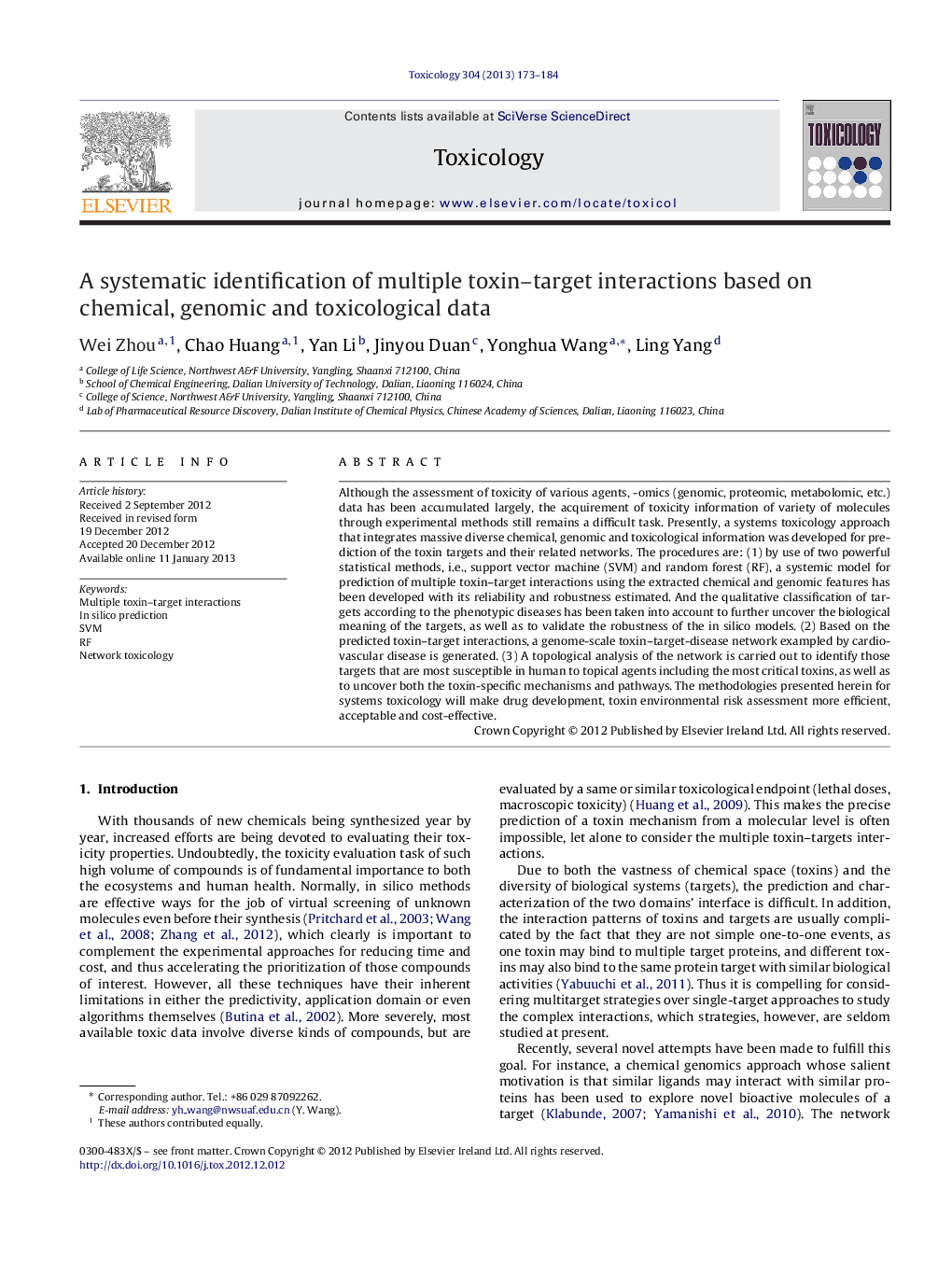| Article ID | Journal | Published Year | Pages | File Type |
|---|---|---|---|---|
| 5859419 | Toxicology | 2013 | 12 Pages |
Abstract
Although the assessment of toxicity of various agents, -omics (genomic, proteomic, metabolomic, etc.) data has been accumulated largely, the acquirement of toxicity information of variety of molecules through experimental methods still remains a difficult task. Presently, a systems toxicology approach that integrates massive diverse chemical, genomic and toxicological information was developed for prediction of the toxin targets and their related networks. The procedures are: (1) by use of two powerful statistical methods, i.e., support vector machine (SVM) and random forest (RF), a systemic model for prediction of multiple toxin-target interactions using the extracted chemical and genomic features has been developed with its reliability and robustness estimated. And the qualitative classification of targets according to the phenotypic diseases has been taken into account to further uncover the biological meaning of the targets, as well as to validate the robustness of the in silico models. (2) Based on the predicted toxin-target interactions, a genome-scale toxin-target-disease network exampled by cardiovascular disease is generated. (3) A topological analysis of the network is carried out to identify those targets that are most susceptible in human to topical agents including the most critical toxins, as well as to uncover both the toxin-specific mechanisms and pathways. The methodologies presented herein for systems toxicology will make drug development, toxin environmental risk assessment more efficient, acceptable and cost-effective.
Keywords
Related Topics
Life Sciences
Environmental Science
Health, Toxicology and Mutagenesis
Authors
Wei Zhou, Chao Huang, Yan Li, Jinyou Duan, Yonghua Wang, Ling Yang,
